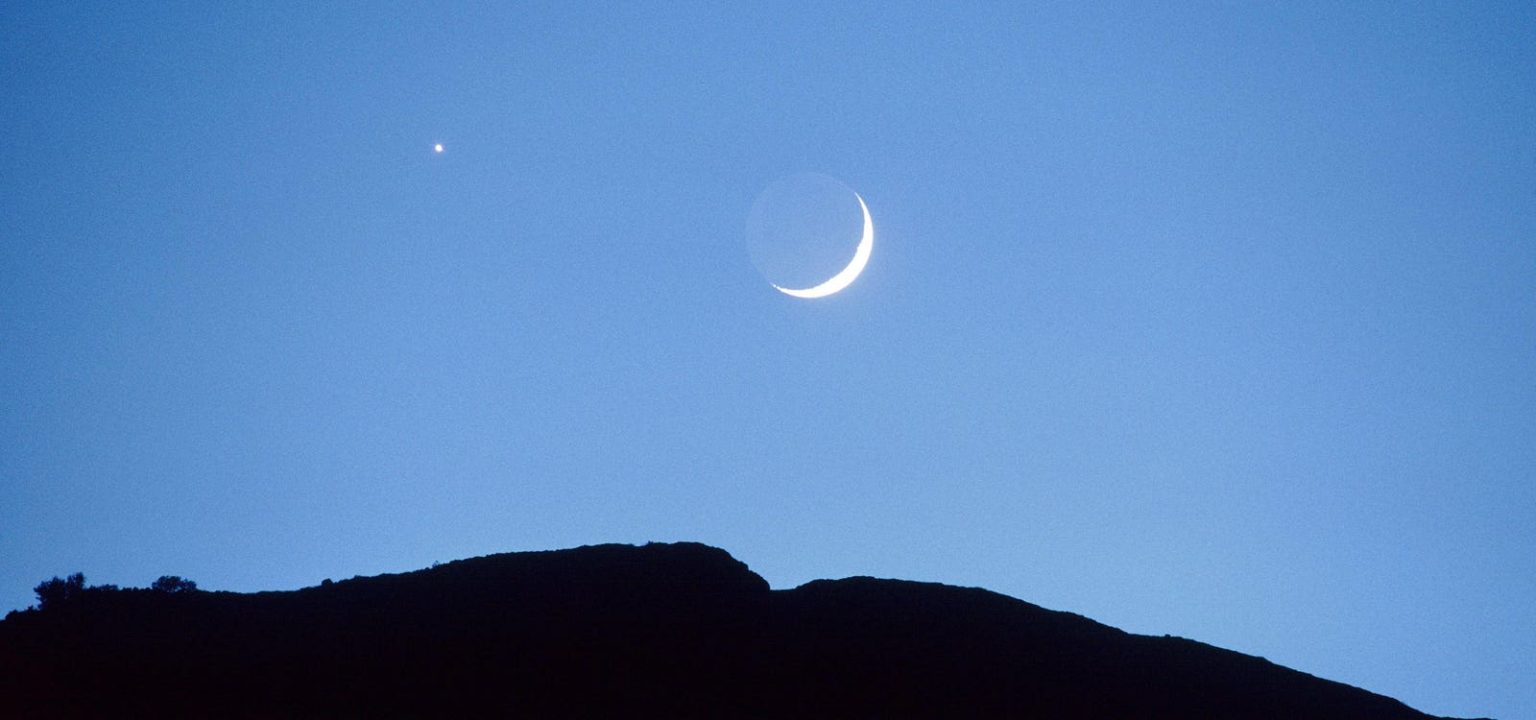A solar eclipse is set to occur on Monday, April 8, captivating audiences across North America with the moon’s silhouette. However, this weekend presents an opportunity to witness some stunning celestial events as the moon transitions into a slim crescent shape in anticipation of the upcoming eclipse. Those with a clear view of the east-southeast horizon on Friday, Saturday, and Sunday evenings will be treated to a beautiful sight of the moon at its best, making it a perfect time for stargazing or camping out ahead of the total solar eclipse in parts of 13 U.S. states.
One of the highlights of this weekend will be the moon’s “eclipse” or occultation of Venus on Sunday, although this event is predicted to take place during the daytime and may only be visible to experienced astronomers with powerful telescopes. Those interested in witnessing this event can consult In The Sky for detailed information and a map showing where it will be visible. Additionally, stargazers can look forward to seeing the crescent moon in proximity to Mars, Saturn, and Venus in the days leading up to Monday’s solar eclipse.
For those looking to catch a glimpse of the crescent moon alongside Mars and Saturn, the optimal viewing times are just before sunrise on Friday, April 5, and Saturday, April 6. By turning their gaze towards the east-southeast sky, observers will be able to spot the waning crescent moon, ranging from 15% on Friday to 8% on Saturday, positioned near Mars and Saturn. Bright Venus will also make an appearance in the east during both mornings, providing a spectacular display of celestial bodies aligning in the sky. Additionally, viewers will have the opportunity to observe “Earthshine” on the dark side of the crescent moon, created by sunlight reflecting off Earth’s clouds and ice onto the lunar surface.
The phenomenon of “Earthshine” has been described as a dim light visible on the dark side of a crescent moon, with origins dating back to Leonardo Da Vinci’s observations in the 16th century. This effect occurs when sunlight reflects off Earth’s clouds and ice, casting a faint glow on the moon’s dark side that can only be seen during a slim crescent moon phase. NASA notes that the strength of “Earthshine” varies throughout the year in response to changes in cloud cover and ice distribution, often referred to as “planet shine” or “ashen glow.” Viewers interested in witnessing this phenomenon are advised to consult online planetariums such as Stellarium or The Sky Live for accurate location-specific information regarding planet-rise, planet-set, sunrise, sunset, and moonrise times.
As the weekend approaches, astronomers and skywatchers alike are encouraged to seize the opportunity to witness the moon’s transition into a slim crescent shape against the backdrop of Mars, Saturn, and Venus. With the solar eclipse fast approaching, clear skies and a keen eye will be essential for capturing the beauty of these celestial events unfolding in the night sky.


